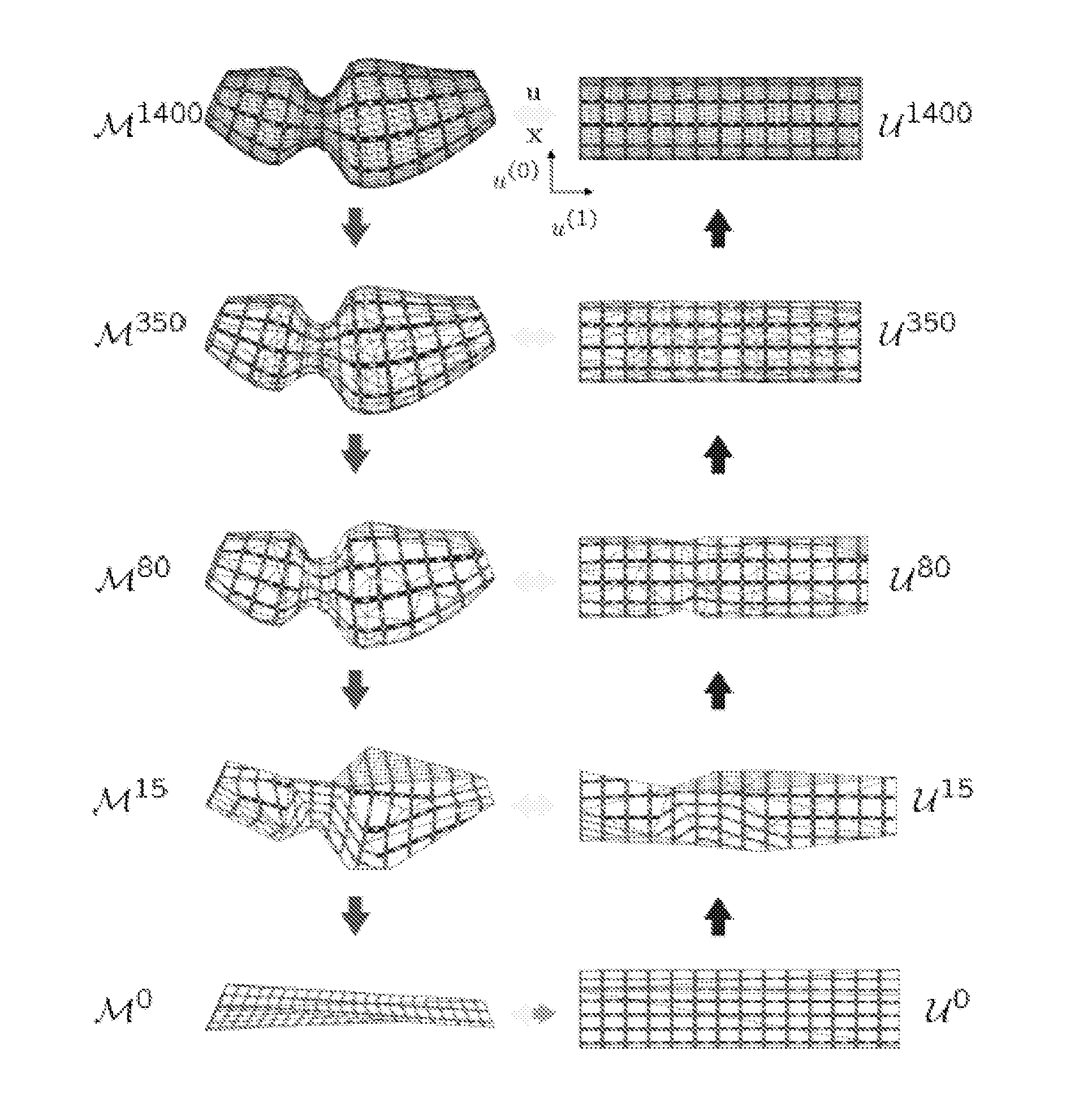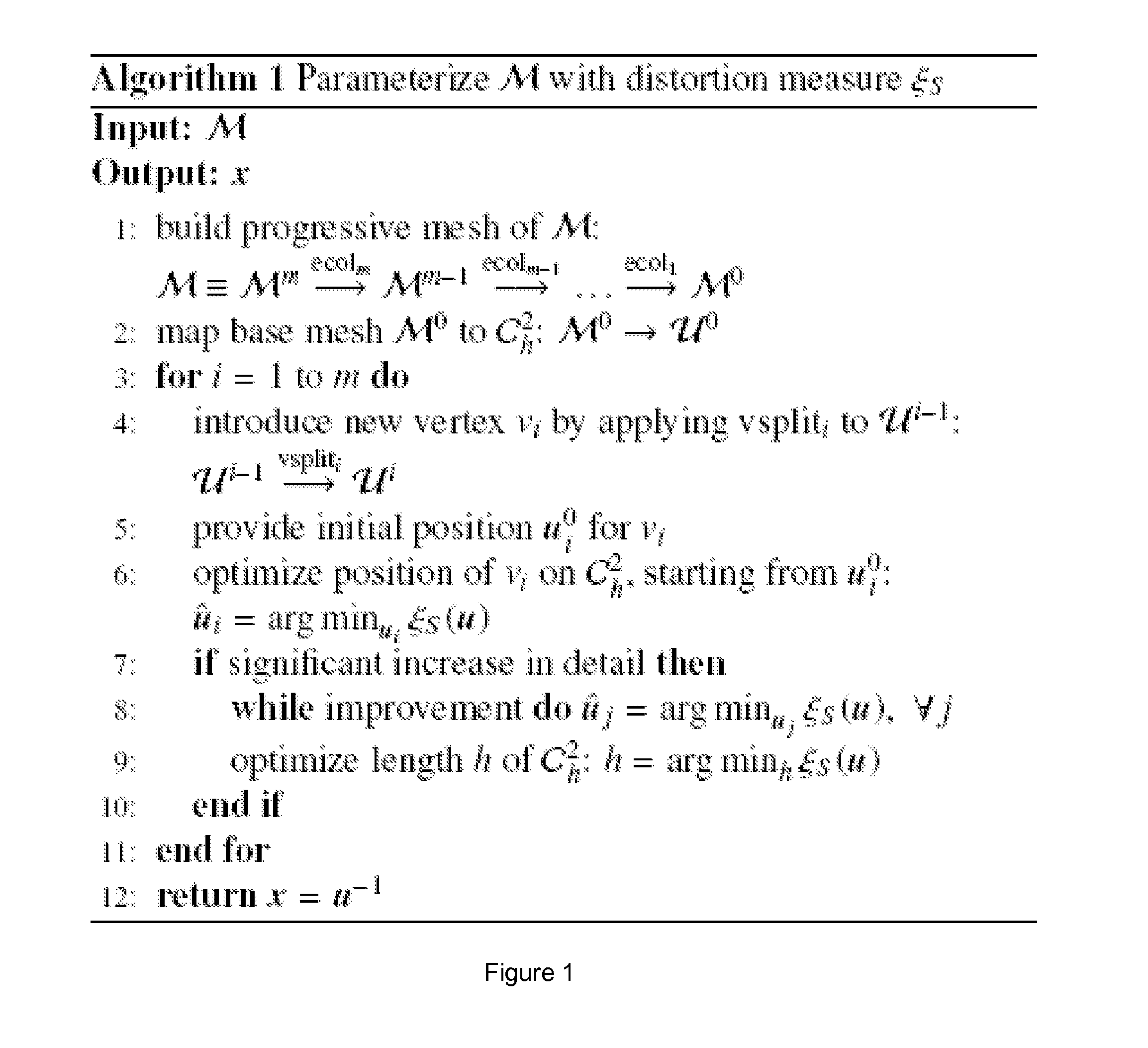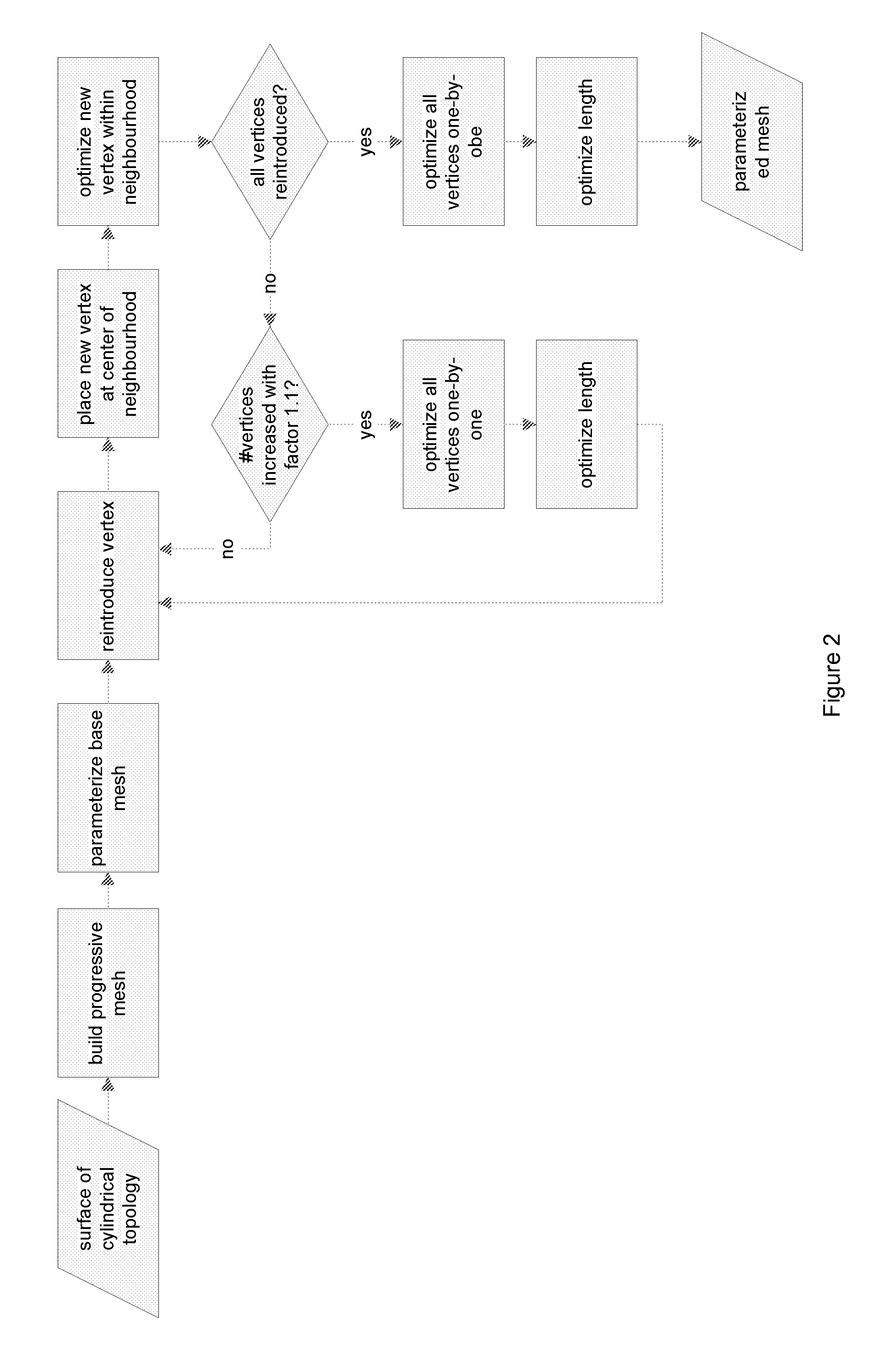Method for mapping tubular surfaces to a cylinder
a technology of tubular surfaces and cylinders, applied in the field of cylindrical surfaces, can solve the problems of inconvenient operation, and inability to accurately map tubular surfaces, etc., and achieve the effects of speeding up the calculation, low angle, and avoiding loss of efficiency
- Summary
- Abstract
- Description
- Claims
- Application Information
AI Technical Summary
Benefits of technology
Problems solved by technology
Method used
Image
Examples
example 1
Generating a Dissection View of the Colon Through Stretch Optimized Colon Flattening
[0151]In a specific embodiment the present invention provides a method for flattening of the colon. The flattening is obtained by minimization of the non-linear stretch metric and the method is made robust and efficient through utilization of a surface hierarchy. In this way, the flattening is generated within minutes. The resulting flattenings are low in both angle and area distortion. As opposed to traditional conformal flattening techniques, which often introduce large area distortions, the method avoids severe down-scaling even for very pronounced protrusions, increasing the detection probability.
1.1 Cylindrical Parameterization of Colon Surface
[0152]When using the method as described above, a dissection view of the colon is generated. The method starts from the surface of the colon wall that has the topology of an open ended cylinder. This surface is first progressively parameterized to an open-...
example 2
Comparison of Colon Stretch Method with Conformal Method
[0158]The topologically cylindrical colon surface M, counting 1.3M triangles, was extracted from a CT data set of the abdomen. The CT volume measured 512×512×532 voxels of size 0.78×0.78×0.8 mm3. The colon surface was parameterized using the progressive stretch minimization technique of this invention and also using the conformal method of Haker et al. (2000b). Both parameterizations were unfolded to the plane and rendered with the techniques of Section 2.2 and Section 2.3. The resulting unfolding is shown in FIG. 10. FIG. 10 illustrates: (a) Surface of the colon. (b) Magnification of part of the colon surface that exhibits significant down-sizing in the conformal flattening. (c) Flattened colon using conformal method. The final rendering is shown at the top and a map of the area distortion and the angle distortion is shown at the bottom. (d) same as in (c) but for the stretch optimization method. (e) Magnification of part of t...
example 3
Linear Parameterization for Cylindrical Surfaces
[0162]This example further illustrates the construction of the three sparse matrices A, C and E as mentioned above.
[0163]The Dirichlet energy, the Laplacian operator, and the boundary conditions will all be formulated in terms of the lengths of the edges uij of the embedding of K in C2h. The length of uij can be calculated using the coordinates of the end points ui and uj of the edge, i.e.
[0164]uij2=ui-uj2=(ui(0)-uj(0))2+(ui(1)-uj(1))2.(4)
Since the parameterization domain is periodic along parameter u(0), some edges will cross the parametric seam u(0)=0=2π. For those edges, the above expression does not calculate the correct length. Given a surface M, a vertex path VP, connecting ∂M0 with ∂M1, is introduced on the surface. The path Vp should not self-intersect and it can have only one vertex on each boundary. The neighbouring vertices of the path VP are divided in two groups: VL are the neighbours on the left side and VR are the nei...
PUM
 Login to view more
Login to view more Abstract
Description
Claims
Application Information
 Login to view more
Login to view more - R&D Engineer
- R&D Manager
- IP Professional
- Industry Leading Data Capabilities
- Powerful AI technology
- Patent DNA Extraction
Browse by: Latest US Patents, China's latest patents, Technical Efficacy Thesaurus, Application Domain, Technology Topic.
© 2024 PatSnap. All rights reserved.Legal|Privacy policy|Modern Slavery Act Transparency Statement|Sitemap



